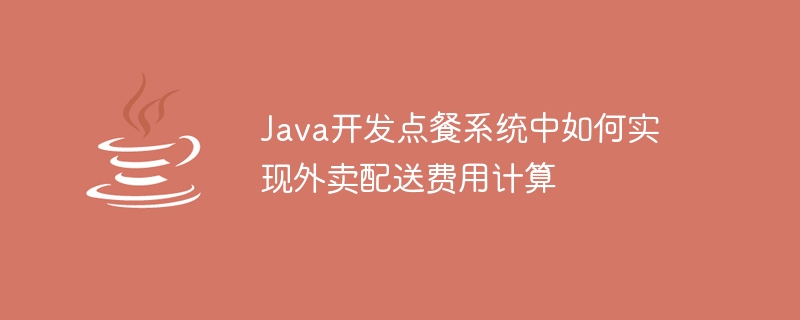

With the development of mobile Internet, the takeout business has risen rapidly, and more and more catering stores have begun to use ordering systems to manage orders and improve efficiency. In the process of developing a food ordering system in Java, an important function is the calculation of takeaway delivery costs. This article will introduce how to implement the calculation of takeaway delivery costs in Java development.
For the calculation of takeout delivery fees, we need to consider multiple factors, including delivery distance, delivery time, delivery charging rules set by catering stores, etc. These aspects will be explained in detail below.
First, we need to get the distance between the user's location and the restaurant. You can use the interface provided by open platforms such as Baidu Map API or Amap API to calculate the actual distance between the user's address information and the longitude and latitude information of the restaurant. This distance will be used as the basis for calculating takeout delivery costs.
Secondly, we need to consider the factor of delivery time. Usually, catering stores will set delivery fees for different time periods. In Java development, you can store delivery fees corresponding to different time periods by setting up a mapping relationship table between time periods and costs. When calculating delivery costs, the time period is determined based on the current time, and the corresponding costs are obtained from the mapping relationship table. If you need to consider cost differences at different distances within the same time period, you can also set multiple cost options in the mapping relationship table and select the corresponding cost based on distance.
In addition, catering stores can also set some special delivery rules. For example, set free delivery for a certain amount of money, or set free delivery for specific areas. In Java development, these rules can be defined in the system and judged and processed when calculating delivery costs.
Finally, we need to consider the handling of some special situations. For example, when the user cancels the order after placing an order, or the user changes the shipping address, etc. In Java development, delivery fees can be recalculated and order information updated when the order status changes or the delivery address is modified.
In general, when calculating takeout delivery costs in a Java ordering system, factors such as delivery distance, delivery time, and special delivery rules need to be considered. By using the map API to calculate the distance, setting the mapping relationship between time period and cost, defining special delivery rules, and recalculating the cost when the order status changes or the address is modified, a complete takeout delivery cost calculation function can be implemented.
It is worth mentioning that during the development process, attention must also be paid to testing and verifying the accuracy and rationality of the delivery fee calculation. By simulating different scenarios, such as different distances, different time periods, different special rules, etc., we conduct tests to ensure that the system's delivery cost calculations are correct and reasonable under various circumstances.
In summary, the calculation of takeout delivery costs in the Java ordering system is a process that comprehensively considers multiple factors such as distance, time, and special rules. Through reasonable design and implementation, the accuracy and rationality of takeaway delivery fees can be ensured, and user experience and satisfaction can be improved.
The above is the detailed content of How to implement takeaway delivery cost calculation in Java development ordering system. For more information, please follow other related articles on the PHP Chinese website!




